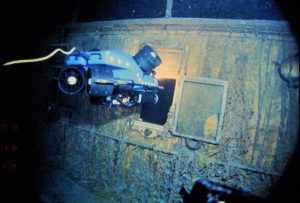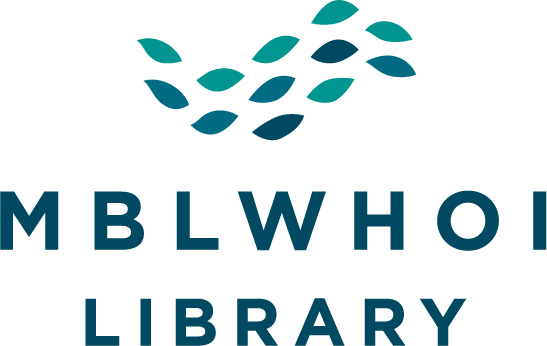Titanic Discovery Digital Collection Now Available Online!

Titanic is a ship that lives in our collective memory as a symbol of a gilded era that ended abruptly and tragically in the North Atlantic Ocean in the early 20th century. When she was discovered in 1985, world attention was again focused on this vessel and the lasting impact of that night. As the 40th anniversary of the discovery approaches, we want to share these materials more widely so that everyone can better understand this discovery and what happened in the days and weeks afterwards.
Since early this year, two dedicated library volunteers, Loree Boyd and Tom Pilitz, have been working with Institution Archivist Karen Urbec to digitize, describe, and contextualize this important collection. There are over two dozen boxes of materials in the Titanic Discovery Collection, which include the logbooks that were kept before and after the discovery, correspondence with people around the world, and documents that record WHOI’s response to the immense international attention that was focused on our small village that summer. This digitization project is ongoing, and we plan to gradually add to the digital collection until the entire collection is complete.
HMS Titanic departed Southampton, England on April 10th, 1912 for her maiden voyage. As she made her way to her intended destination of New York, she struck an iceberg late on April 14th. Of the 2,200 passengers and crew, over 1,500 were lost when the ‘nearly unsinkable’ vessel sank at about 2:30 am on April 15th. Though sought after for decades, Titanic was not found quickly or easily. It was the work of many people over many years, and it also required the most sophisticated technology available at the time.
Just as the sinking altered the world, ending many lives and some even say ending an era, so too her finding also dramatically changed lives, institutions, our understanding of what we can do in the ocean for science and society. By making this collection available online, we hope to increase the awareness and understanding of the entire story by increasing access to the archival record that we have gathered.
Access this collection in our WHOAS repository (https://hdl.handle.net/1912/66380)
by Karen Urbec
